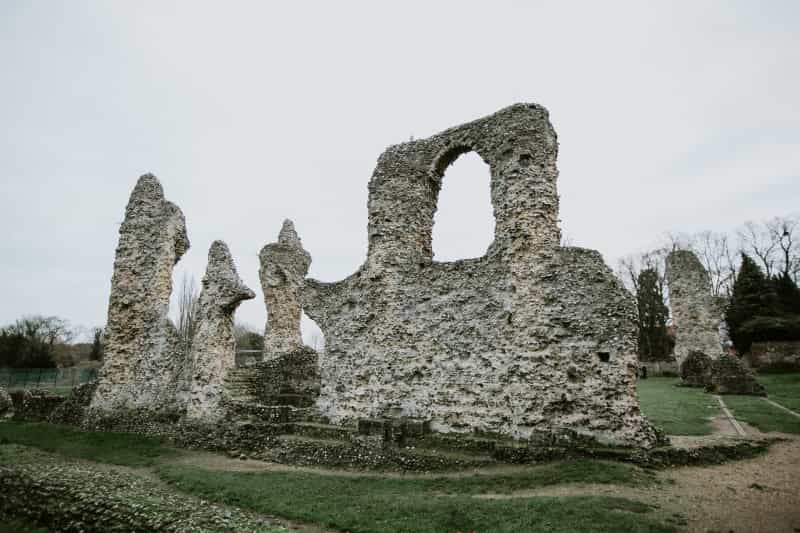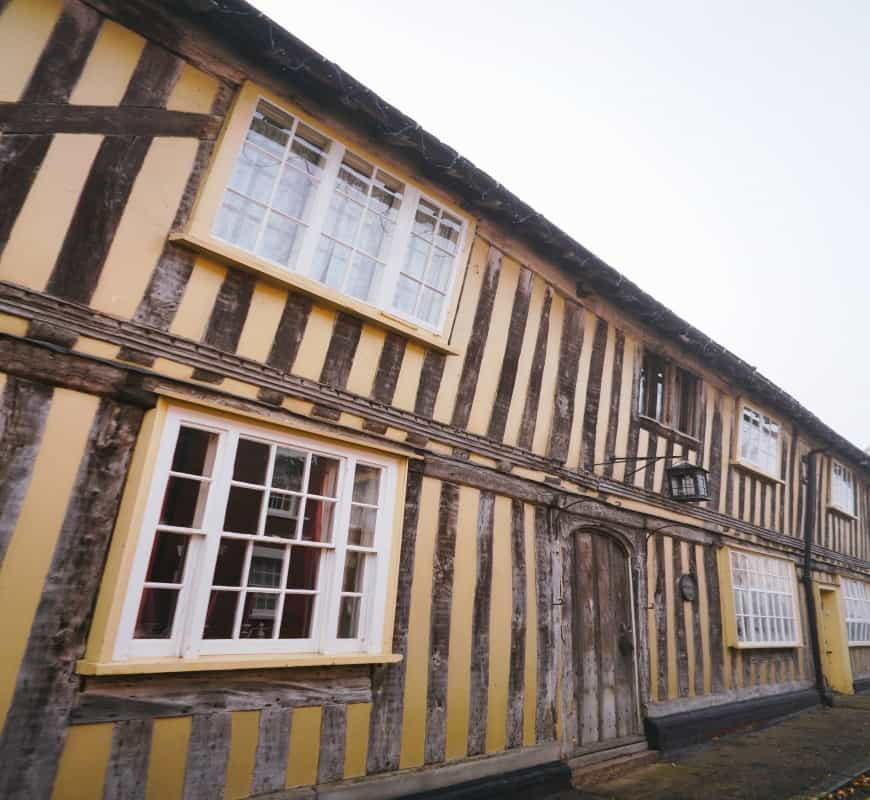7 Best Things To Do In Suffolk
Be it coastline or castle, Tudor village or garden stroll, with so much scenic splendour and rich history around Suffolk you may well be scratching your head when deciding on that grand day out or that ‘best thing to do’ in the county.
Stuck to know where to start with Suffolk days out? Read this list of the 7 best things to do in Suffolk for a few good ideas to get you going.

Sutton Hoo
As the site of ancient royal burial grounds, Anglo-Saxon ships, and Viking sieges, Sutton Hoo is firmly in the history books and one of Suffolk’s most famous destinations. And you can learn all about it in the High Hall exhibition. From pottery to weaponry to jewellery, there is a vast array of artefacts to admire here – and they create a vivid impression of Suffolk life in the 6th and 7th centuries.
There are also short films throughout the exhibition which will further aid your understanding of the trade routes, fighting techniques and religious practices that came to define Anglo-Saxon culture. Family and learning activities are also available, including themed walking trails for further discovery.
Choose a campsite near Sutton Hoo.
Framlingham Castle
Continue north-east from Sutton Hoo and you’ll see the 800-year-old walls of Framlingham Castle rise into view. Surrounded by rolling parkland and lake, this magnificent and imposing Norman structure was for generations home of the Dukes of Norfolk and also the place where Mary Tudor fled to in order to be proclaimed Queen of England in 1553. It’s a pretty historic place.
Take the wall walk around the castle, up at a height of 10.5 metres, and survey the scenic unfolding of the Suffolk countryside. While you’re up there, you might even try counting the multitude of 12th-century and Tudor chimneys, which are the oldest surviving examples in the country.
And there’s more… you can also visit the 17th-century workhouse, take part in hands-on themed activities, peruse the shop and/or settle in for Tudor-styled dishes at the Castle Café.
Pitch your castle near Framlingham.
Orford Castle/Orford Ness
Of course, Framlingham is not the only castle option in Suffolk. Go from Framlingham toward the coast between Aldeburgh and Orford and you’ll reach the remarkably intact 12th-century Orford Castle. This impressive polygonal structure has one of England’s most complete keeps, whose view from on top is a wonderful vista looking seaward over Orford Ness.
Inside, explore a labyrinth of passages and vital wells in the basement and admire Roman brooches, medieval coins and historic borough regalia in the Upper Hall unit, then complete your education in the Orford Museum in the castle’s top level.
All facilities are provided on site and there is also a picnic area for pleasant lazing and grazing.
Find the right site near Orford.

Aldeburgh
A few miles along the coast is the lovely seaside town of Aldeburgh, home to one of Suffolk’s best beaches and, famously, the origins of the celebrated composer Benjamin Britten. The sight of its promenade alone, lined as it is with its pastel-coloured 19th-century villas, will have you on a long, lazy stroll on the pebbled, dog-friendly beach, punctuated by some of the fish and chips for which Aldeburgh is also well known. There are a variety of options to choose from along the promenade, ranging from takeaway to pub to dining room formats, all of which are highly rated.
By the prom also are the 16th-century, Grade I-listed Aldeburgh Museum, the Aldeburgh Beach Lookout and Art House and the beachside Martello Tower, an early 19th-century fort structure built as defence against Napoleon’s armies (but thankfully never used).
Aldeburgh’s high street is also worthy of a stroll for its boutiques, used-book shops and antiques; if you don’t go in for the fish and chips, there are enough great pubs, cafés and restaurants to choose from.
Find a campsite near Aldeburgh.

Bury St Edmunds/St Edmunds Abbey & Gardens
A thousand years of history, architecture and culture converge upon mid Suffolk at Bury St Edmunds, where a full day out is easily spent among its landmarks, shops, eateries, art galleries, churches and breweries.
You could just spend much of the day in the Abbey of St Edmund Abbey Gardens. Once the grounds of one of England’s richest, largest and most powerful Benedictine monasteries, here now are 14 acres of award-winning gardens to lose yourself in. Stroll the hours away among their colourful displays and soak up the serenity of its many niches and hidden corners.
The 11th-century remains of the abbey itself are as extensive as they are fascinating and include the 14th-century abbey gate and the Norman Tower, the oldest Norman building in England… certainly worthy of thorough exploration.
Other sites are St Edmundsbury Cathedral (the only cathedral in the county), the Suffolk Regiment Museum, the Greene King Brewery (for tours), the Theatre Royal and the city’s special Blue Plaque trail, taking you through the households and haunts of an eclectic mix of historical figures (Charles Dickens, for one).
Food, drink? You’ll find plenty of excellent options. And for a real taste of the area, keep it authentic with Bury St Edmunds’ markets (on Wednesdays and Saturdays) for all forms of local produce, food stalls and special offers.
Great camping near Bury St Edmunds.

The Brecks
Rainy day or not, this is the best reason to get out of the tent. ‘The Brecks’ is short for ‘Brecklands’ and not only is it among the best places to walk in Suffolk, it is also among the best dog walking areas in Suffolk.
It’s a slightly surreal landscape and no less attractive for it: purple heathland, gnarly scots pines, rare wildlife and endless, winding trails into its heart, Thetford Forest. If you want to spend a few days exploring this superb trekking area, base yourselves around the ancient flint-mining village of Brandon or nearby Elvedon.
Find your patch near The Brecklands.
Wool Towns
These are simply not to be missed. These are some of the best-preserved Tudor-timbered villages in all of Britain, and you will not see any prettier. Lavenham, Clare, Long Melford, Kersey, Cavendish… all sprang from Suffolk’s enriching wool trade in the 15th century and now count among the country’s most scenic destinations to explore.
Perhaps most famous is Lavenham, commonly considered as ‘England’s Best Preserved Medieval Village’, with no fewer than 340 listed buildings. Just to poke around its narrow laneways and the crooked, slanting cottages is to enter a time capsule and envision Suffolk life as it was 600 years ago.
Dotted amidst the county’s rolling countryside, Suffolk’s wool towns are perfect for plotting a few days’ journey on foot, and for stopping to sample local Anglian beers and food under a low-timbered roof.
Camp out around near Lavenham.

But that’s only seven, and the list of ‘best things to do in Suffolk’ stretches much further than that. If you want to explore the lot, you’ll need to find the right place to pitch up. To help you on your way, check out our East Anglia Camping Guide.